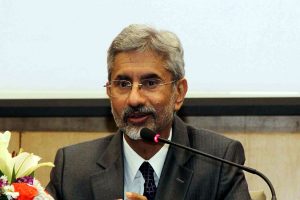Constitution Day, celebrated on November 26, holds immense significance in India and beyond not only because it marks the historical event of the adoption of the country’s Constitution but also because the text of the “highest law of the land” resonates with our quotidian aspiration and further encourages continuous negotiation in the public sphere for reshaping India’s governance framework. That’s why it serves as a model of constitutionalism in the broadest sense, emanating from the jurists, but remains amenable to reforms through multiple negotiations.
To understand whether the provisions outlined in a constitution are accurately reflected in its real-world political landscape, we need to reflect upon the situation critically. This analysis involves examining the discrepancies between the idealised version of governance outlined in the Constitution and the practical implementation of its canonical principles. It requires considering factors like implementation gaps, socio-cultural context, institutional effectiveness, citizen engagement etc.
Advertisement
In other words, theoretically, a democratic constitution is vox populi, vox dei but in real life how far we are constrained by the majority remains as a matter of complex negotiation and injects a sense of probing and reckoning into whether the spirit of the Constitution is truly reflected in the country’s complex political reality. India’s “rights revolution” denoting the enactment of several landmark rights during the first one and half decades of the new millennium has been a remarkable feat cum master stroke, transforming the country into a more inclusive and equitable society.
Since independence, India has made significant strides in recognizing and protecting citizens’ rights. The introduction of the Right to Information (RTI) Act in 2005 was a notable milestone, ensuring citizens’ access to government information and promoting transparency and accountability. This was followed by other landmark legislations including the Right to Education Act in 2010, guaranteeing free and compulsory education for children aged 6-14, the National Food Security Act of 2013 providing subsidized food grains to vulnerable populations, thus further expanding the social safety net.
Likewise, we may touch upon a few key initiatives in this context including the decriminalization of homosexuality a major victory for LGBTQ+ rights in 2018, the right to privacy – recognized as a fundamental right by the apex court in 2017, women’s rights strengthening protections against rampant gender discrimination through the Domestic Violence Act (2005) and the Sexual Harassment of Women at Workplace Act (2013), disability rights i.e. the Rights of Persons with Disabilities Act (2016) all of which demonstrate India’s colossal commitment to inclusivity.
Despite these advancements, effective implementation remains a daunting challenge due to infrastructure and resource constraints, bureaucratic inefficiencies, and umpteen socio-cultural barriers. For example, a notorious tendency can be seen in the domain of forest and environment where piles of complaints regarding illegal encroachment of tribal land, arsenic contamination of aquifers, extensive air pollution by unsustainable practices, and unregulated municipal waste threatening serenity and biodiversity remain unaddressed despite the recommendations of the NGT and reports of the amicus curiae. As environmental historian Ramachandra Guha once pointed out, India today is marked by polluted skies, dead rivers, falling water tables and fast-disappearing forests.
The status of the marginalized communities remains a pressing issue insofar as India’s marginalized communities particularly Dalits, Adivasis, and socially/economically disadvantaged groups including cultural minorities are concerned. Having faced the brunt of systemic discrimination they question the government’s welfare commitments. Often frustration arises out of tokenistic freebies that undermine structural reforms, exacerbating inequalities. In this context, key concerns include harsh neoliberal policies reducing public spending on essential services, politically targeted subsidies instead of universal entitlements, privatization of healthcare, education and essential services and disproportionate resource allocation.
Besides, India’s abolition of the Planning Commission has not eradicated the centralising tendencies in government operations with the newly introduced agency of ‘Niti Aayog’. To address this, the government should consider empowering states and local bodies, restructuring the bureaucracy to reduce the dominance of the Centre, strengthening local self-government through constitutional reforms, and leveraging digital governance and data-driven decision-making while moving towards enhancing parliamentary oversight and cooperative federalism. Hence reforms in these areas compose the agenda of priority not only to promote institutional frameworks for greater efficiency but also to usher in a more equitable and participatory governance framework with a rights-based approach and trust. Next, we can focus on regionalism.
Regionalism in India is indeed underway, counterbalancing political centralization to some extent. Key indicators suggest the rise of regional parties, with 43 per cent of Lok Sabha seats held by non-national parties (2019), demonstrating a perceptible shift in the calculus of voter preferences. Decentralization initiatives, such as the 14th Finance Commission’s recommendations, have increased state shares in central taxes. The state government’s growing assertiveness in policy-making, exemplified by Andhra Pradesh’s special category status demand, reflects regional aspirations. Brown University professor Ashutosh Varshney aptly flags a seminal point in this context as he states that a nation is described by scholars as a political roof over one’s cultural head but India had many cultural heads and no political roof.
However, today, the Constitution is a paramount reason of our status as an independent and proud personality. A key to our success is our accommodation of multiculturalism qua regionalism. However, limitations still persist in several key areas like inequitable resource distribution among states, and inadequate devolution of powers to local bodies. Despite these constraints, the momentum of regionalization indicates a gradual shift toward greater regional autonomy, tempering political centralization. Moreover, we are indeed living in an era dominated by market forces and privatization, sparking concerns about the potential encroachment on the public sphere. The risk is palpable because unche – cked market expansion may lead to the commodification of essential services, prioritizing profit over public interest, erosion of social welfare and equality, as private interests supplant public provisions and decreased government accountability, as privatized services operate outside public oversight.
However, effective regulation and strategic privatization can also enhance efficiency and innovation in public service, help in wooing investment and expertise, augment public capacity, foster public-private partnerships, and leverage resources for societal benefit. Therefore, striking a balance between market forces and public interest is vital. By doing so, we can harness the benefits of privatization while preserving the integrity of the public sphere. The observance of Constitution Day resonates deeply within the fabric of our society, echoing a profound spirit of agency, confidence, and civic engagement among the populace, especially the Gen Z.
It serves as a reminder that “WE THE PEOPLE OF INDIA” are not mere spectators but active authors of the narrative that shapes our nation. Through candid roleplaying and participatory dialogue, we can guide and direct the evolution of our political landscape, transforming aspirations into tangible outcomes rather than indulging in wishful thinking. In today’s rapidly changing world, where technology is often heralded as a game changer, it is crucial to recognize that the true miracle lies not in technological breakthrough alone but in our collective volition to embark on this journey together.
As we tread miles in pursuit of progress, it is our shared commitment to engage meaningfully with one another that will ultimately determine the trajectory of our democracy and ensure that every voice contributes to the ongoing story of our nation. Hence this celebration has profound implications for education, socialization, and culture, ensuring that the Constitution remains a living document, guiding India’s resurgence.
(The writers are, respectively, Professor, Department of Political Science, SKB University, Purulia, and Associate Prof. (Retd.), Chandernagore Govt. College, Hooghly.)











